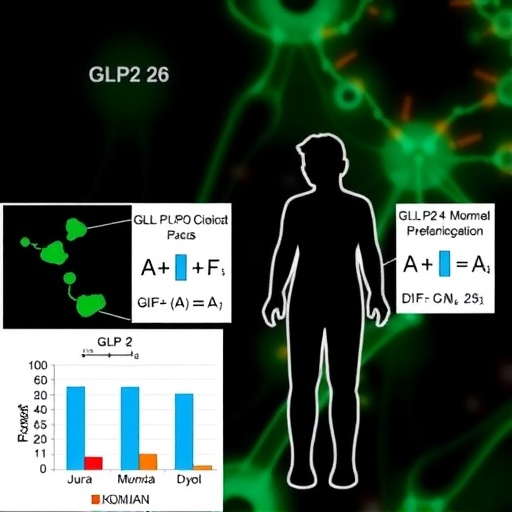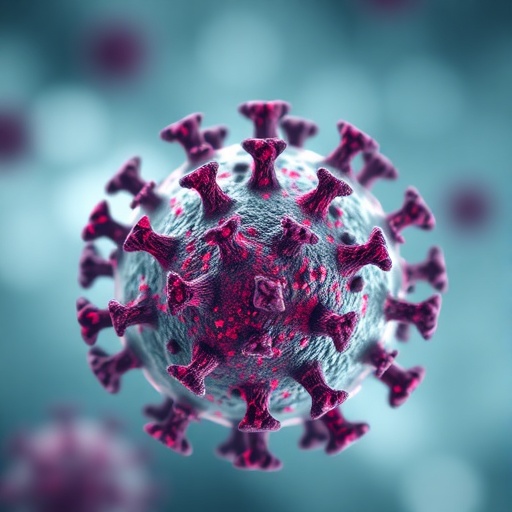Antipsychotic medications, while indispensable for managing psychotic disorders, have long been associated with a range of debilitating metabolic side effects that severely impact patient health and treatment outcomes. Among the most troubling are acute episodes of hypothermia and the well-documented chronic consequences of weight gain accompanied by insulin resistance and impaired glucose tolerance. Despite the prevalence of these adverse effects, the medical community currently lacks effective interventions that both prevent acute hypothermia and address the progressive metabolic dysfunction induced by chronic antipsychotic use. However, groundbreaking new research published in Nature Metabolism elucidates a promising therapeutic target that may revolutionize the management of these side effects and improve the quality of life for millions of patients worldwide.
Teduglutide’s efficacy stems from its ability to stimulate VMH^Pdyn neurons, effectively counteracting the suppressive influence of olanzapine. By activating these neurons, teduglutide restores normal hypothalamic signaling, thereby maintaining body temperature regulation and preventing abnormal weight gain. Such findings underscore the therapeutic potential of GLP-2 receptor agonism in modulating hypothalamic circuits to combat drug-induced metabolic dysfunction. Importantly, this approach targets the root mechanistic pathways rather than only managing symptoms, marking a paradigm shift in the treatment of antipsychotic complications.
Further elucidating the role of VMH^Pdyn neurons, the research team employed selective genetic ablation techniques to mimic olanzapine’s metabolic effects. The targeted destruction of these neurons in mice recapitulated both acute hypothermia and chronic weight gain observed with drug administration. This experimental validation confirms the causal role of VMH^Pdyn neuronal activity in maintaining metabolic equilibrium and highlights their vulnerability to pharmacological interference by antipsychotic agents.
Moreover, chemogenetic activation experiments provide compelling evidence that artificially stimulating the VMH^Pdyn neurons can completely abolish olanzapine-induced hypothermia and excessive weight gain. This intervention preserved the antipsychotic’s psychotropic efficacy, importantly dissociating therapeutic action from metabolic side effects. Such selective modulation opens new avenues for developing adjunct therapies that safeguard metabolic health without compromising psychiatric treatment effectiveness.
These discoveries hold profound implications for clinical practice. Currently, no approved treatment exists to manage antipsychotic-induced hypothermia, a life-threatening acute event. Similarly, strategies to prevent or reverse weight gain and insulin resistance are limited, with lifestyle interventions frequently proving ineffective over the long term. Introducing GLP-2 receptor agonists such as teduglutide could offer a targeted pharmacological solution, providing neuroprotection and metabolic stabilization simultaneously.
From a neuroscientific perspective, the identification of VMH^Pdyn neurons as key integrators of serotonin receptor 2C modulation in the hypothalamus bridges critical gaps in our understanding of central thermoregulation and energy balance. It accentuates the delicate interplay between neurotransmitter systems and metabolic circuits disrupted by antipsychotic drugs. This knowledge enriches the broader framework of hypothalamic function in health and disease and could inspire novel research into other neuropsychiatric and metabolic disorders.
Furthermore, the study highlights the versatility of GLP-2 signaling beyond its classical roles in intestinal growth and nutrient absorption. The central nervous system actions of GLP-2 receptor agonists emerge as an exciting frontier, particularly in treating complex side effects of psychopharmacological agents. This could represent a significant expansion of GLP-2-based therapies, currently explored primarily in gastrointestinal contexts.
The translational potential is especially promising given teduglutide’s established clinical use for short bowel syndrome, suggesting a feasible pathway to repurpose this drug for managing antipsychotic side effects. Rigorous clinical trials will be necessary to validate efficacy and safety profiles in human populations but the mechanistic groundwork laid by Peng and colleagues provides a compelling rationale to pursue these studies without delay.
This research also emphasizes the importance of viewing antipsychotic side effects not as inevitable consequences but as mechanistically preventable phenomena. Understanding the neural substrates of adverse effects enables the design of therapies that preserve psychiatric benefits while minimizing harm, a longstanding challenge in mental health care.
In summary, the demonstration that VMH^Pdyn neurons crucially mediate both acute hypothermia and chronic metabolic dysfunction induced by olanzapine marks a major scientific advancement. The successful prevention of these side effects through GLP-2 receptor agonism by teduglutide represents a beacon of hope for improving antipsychotic treatment tolerability. It opens the door to integrated neuro-metabolic therapeutics that could significantly enhance patient adherence and outcomes in psychiatric medicine.
As the field moves forward, the intersection of neuroendocrinology, psychopharmacology, and metabolism unveiled by this study promises to reshape how we approach drug safety and efficacy. The intricate hypothalamic microcircuits governing energy homeostasis emerge as both vulnerable nodes and therapeutic targets, underscoring the sophistication of brain-body interactions in health and disease.
For patients and clinicians alike, these findings offer a visionary glimpse into a future where devastating metabolic side effects are no longer an accepted trade-off but actively prevented through precision neuropharmacology. The work by Peng et al. embodies the translational spirit of modern biomedical science, turning detailed mechanistic insights into tangible therapeutic solutions with the potential to impact millions of lives.
Subject of Research: Antipsychotic-induced metabolic dysfunction and the therapeutic potential of glucagon-like peptide 2 receptor agonism.
Article Title: GLP-2 prevents antipsychotics-induced metabolic dysfunction in mice.
Article References:
Peng, Y., Feng, C., Peng, S. et al. GLP-2 prevents antipsychotics-induced metabolic dysfunction in mice. Nat Metab 7, 730–741 (2025). https://doi.org/10.1038/s42255-025-01252-7
Image Credits: AI Generated
DOI: https://doi.org/10.1038/s42255-025-01252-7
Tags: antipsychotic-induced metabolic dysfunctioncardiovascular risks of antipsychoticschronic effects of antipsychotic medicationsGLP-2 therapy for antipsychotic side effectsglucagon-like peptide 2 analogshypothermia in antipsychotic treatmentimproving quality of life in psychotic disordersinnovative treatments for medicationinsulin resistance management in psychiatric patientsmetabolic syndrome and psychotropic drugsolanzapine weight gain preventionteduglutide for metabolic issues





